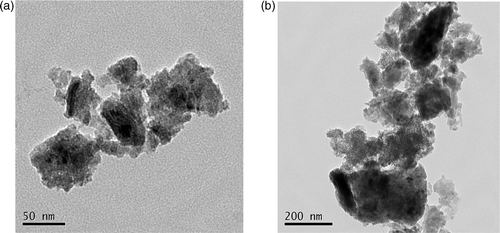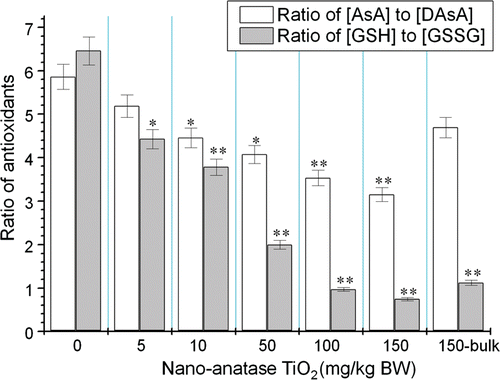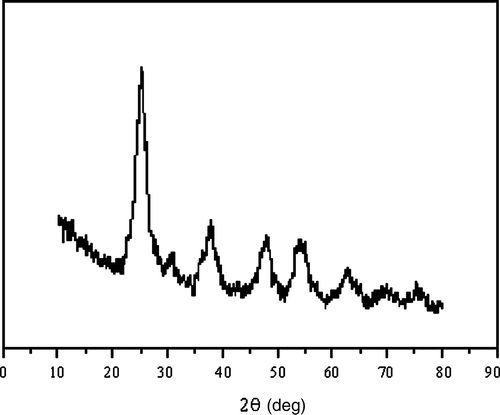Figures & data
Figure 2. Sizes of TiO2 particles observed by TEM: (a) nano-anatase TiO2 particles and (b) bulk TiO2 particles.

Table 1. Increase of net weight and coefficients of the kidney of ICR mice after abdominal cavity was injected with nano-anatase TiO2 suspensions.
Table 2. Contents of titanium in the kidneys of mice after abdominal cavity was injected with nano-anatase TiO2 suspensions.
Figure 3. Histopathology of the nephric tissue in female mice after intraperitoneal injection with various doses of nano-anatase TiO2 suspensions for consecutive 14 days. (a) control group (400×): renal glomerulus is complete and renal tubule is normal; (b) 5 mg/kg BW nano-anatase TiO2 group (100×): without abnormal pathology changes; (c) 50 mg/kg nano-anatase TiO2 group (200×): arrows indicate focal basophilia; (d) 100 mg/kg BW nano-anatase TiO2 group (200×): arrows indicate focal congestion; (e) 150 mg/kg BW nano-anatase TiO2 group (200×): diffuse basophilic degeneration and (f) 150 mg/kg BW bulk TiO2 group (100×): obvious congestion, basophilic degeneration.

Table 3. Changes of biochemical parameters in the blood serum of mice kidneys after abdominal cavity was injected with nano-anataseTiO2 suspensions.
Table 4. Generating rate of ROS and lipid peroxidation of the kidneys of ICR mice after abdominal cavity was injected with nano-anataseTiO2 suspensions.
Table 5. Activities of antioxidative enzymes of the kidneys of ICR mice after abdominal cavity was injected with nano-anataseTiO2 suspensions.
Figure 4. Ratios of AsA to DAsA and GSH to GSSGG of kidneys of mice after nano-anatase TiO2 suspensions were injected into abdominal cavity. Note: bars marked with an asterisk or double asterisks means it is significantly different from the control (no nano-anatase or bulk TiO2) at the 5% or 1% confidence level, respectively. Values represent means ± SE, n = 5.

